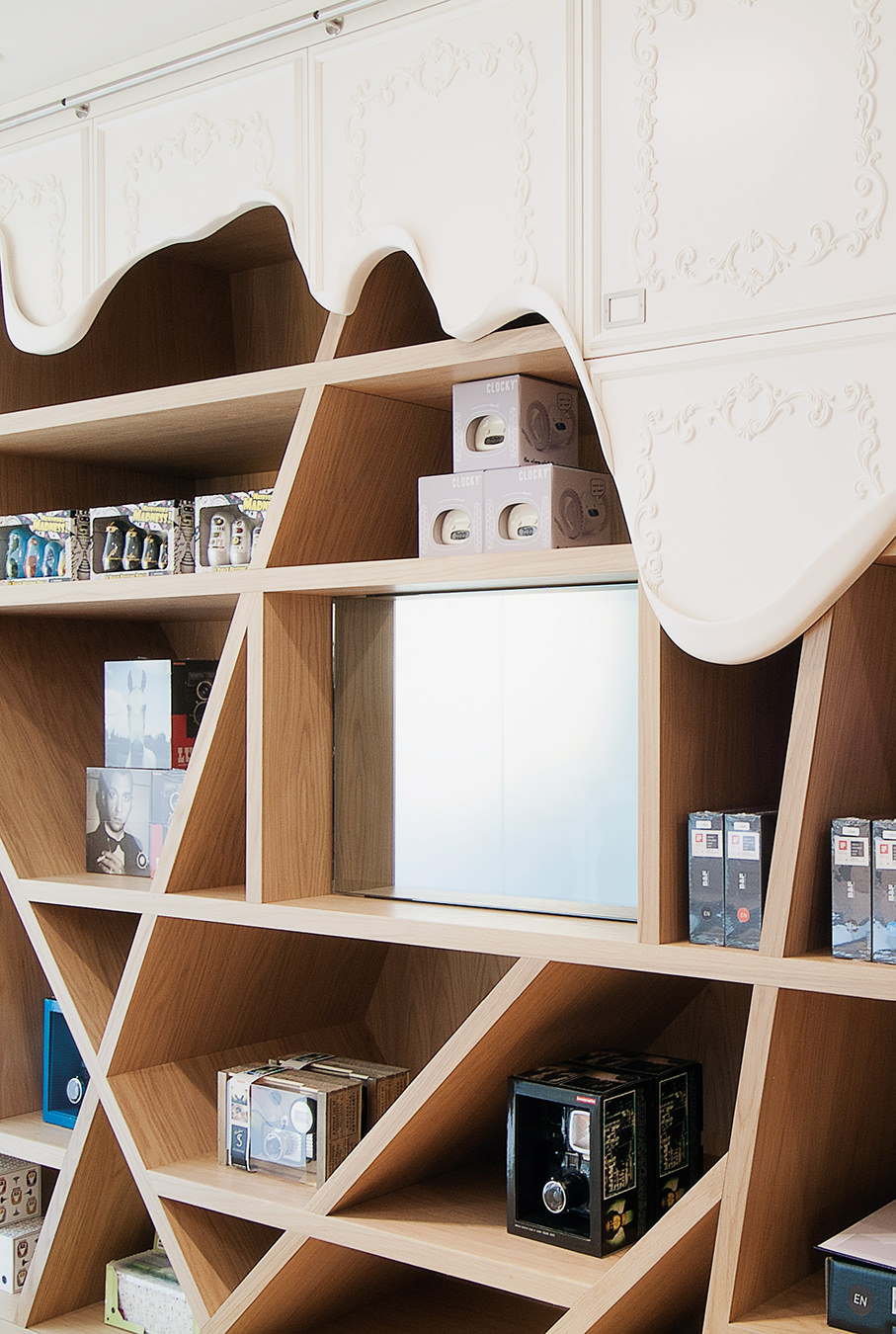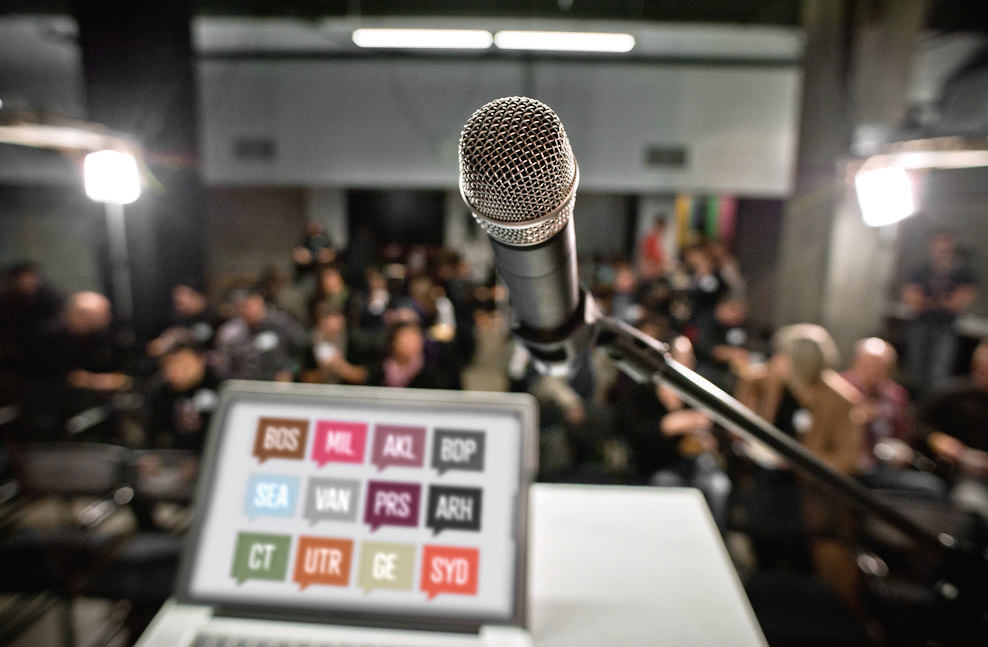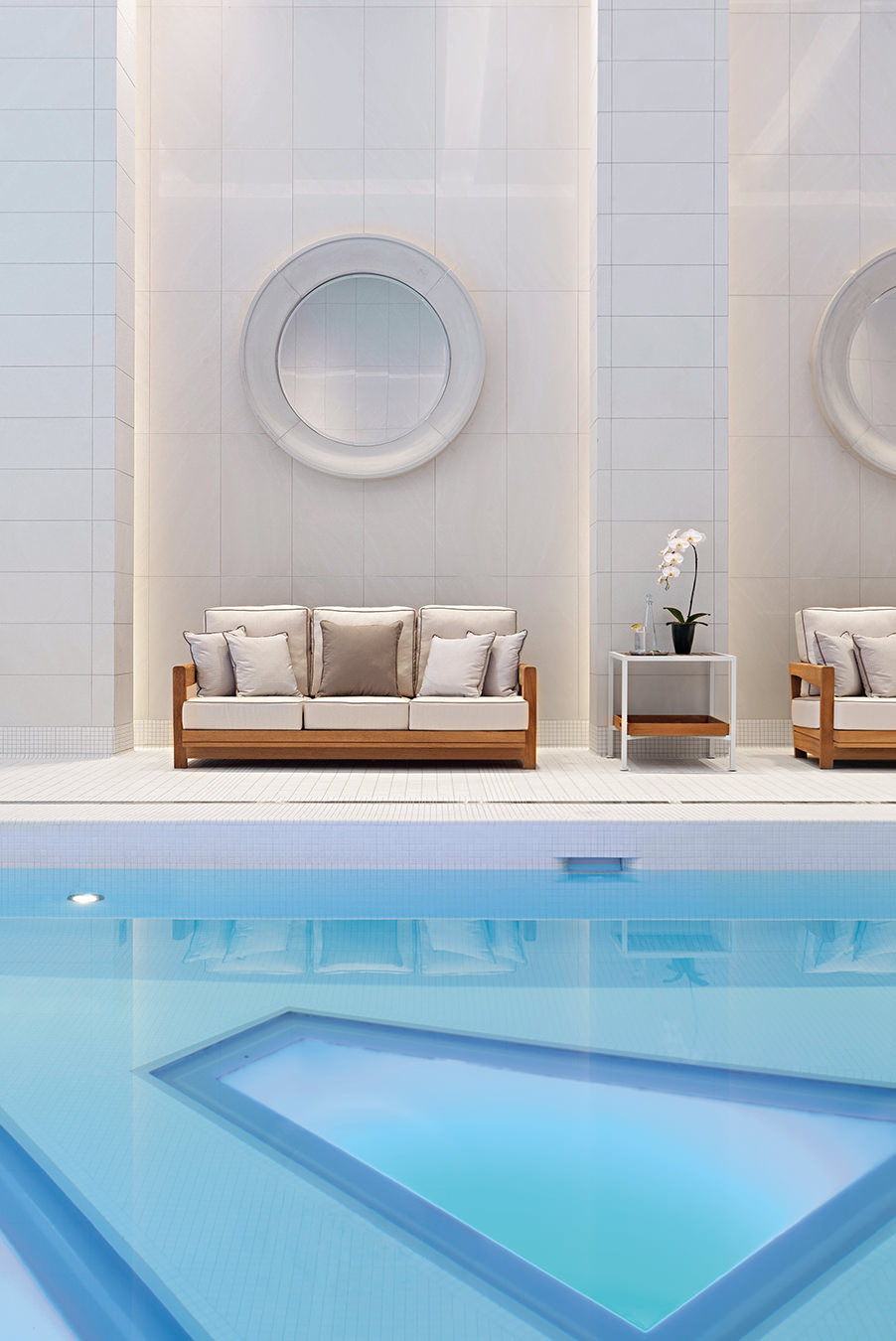-
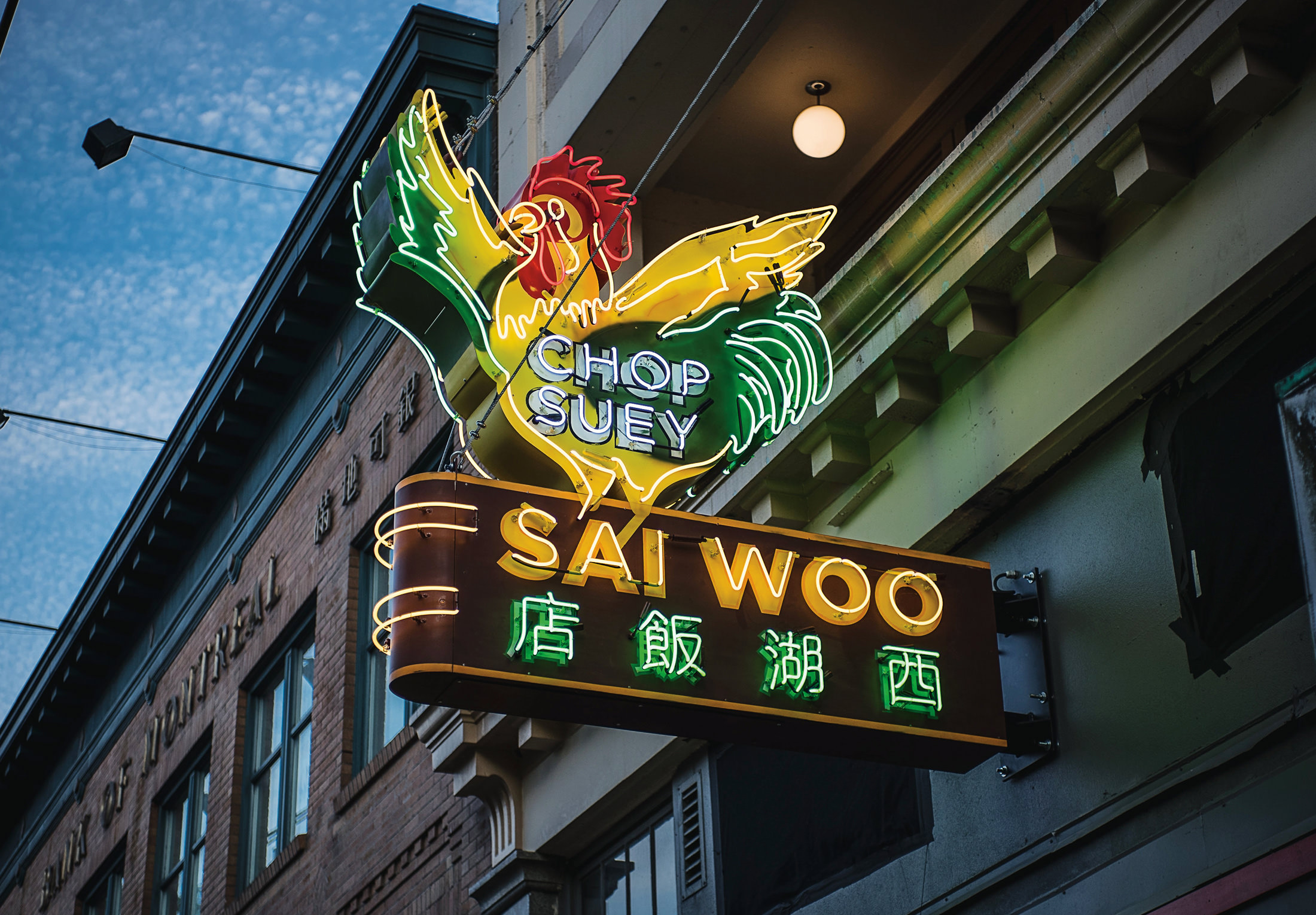
A re-creation of the original Sai Woo neon sign in Vancouver’s Chinatown.
Photo by Ocean Peak Studios.
-

In the 1950s, Vancouver boasted an impressive tally of 19,000 neon signs.
Photo by B.C. Jennings/© The City of Vancouver.
-
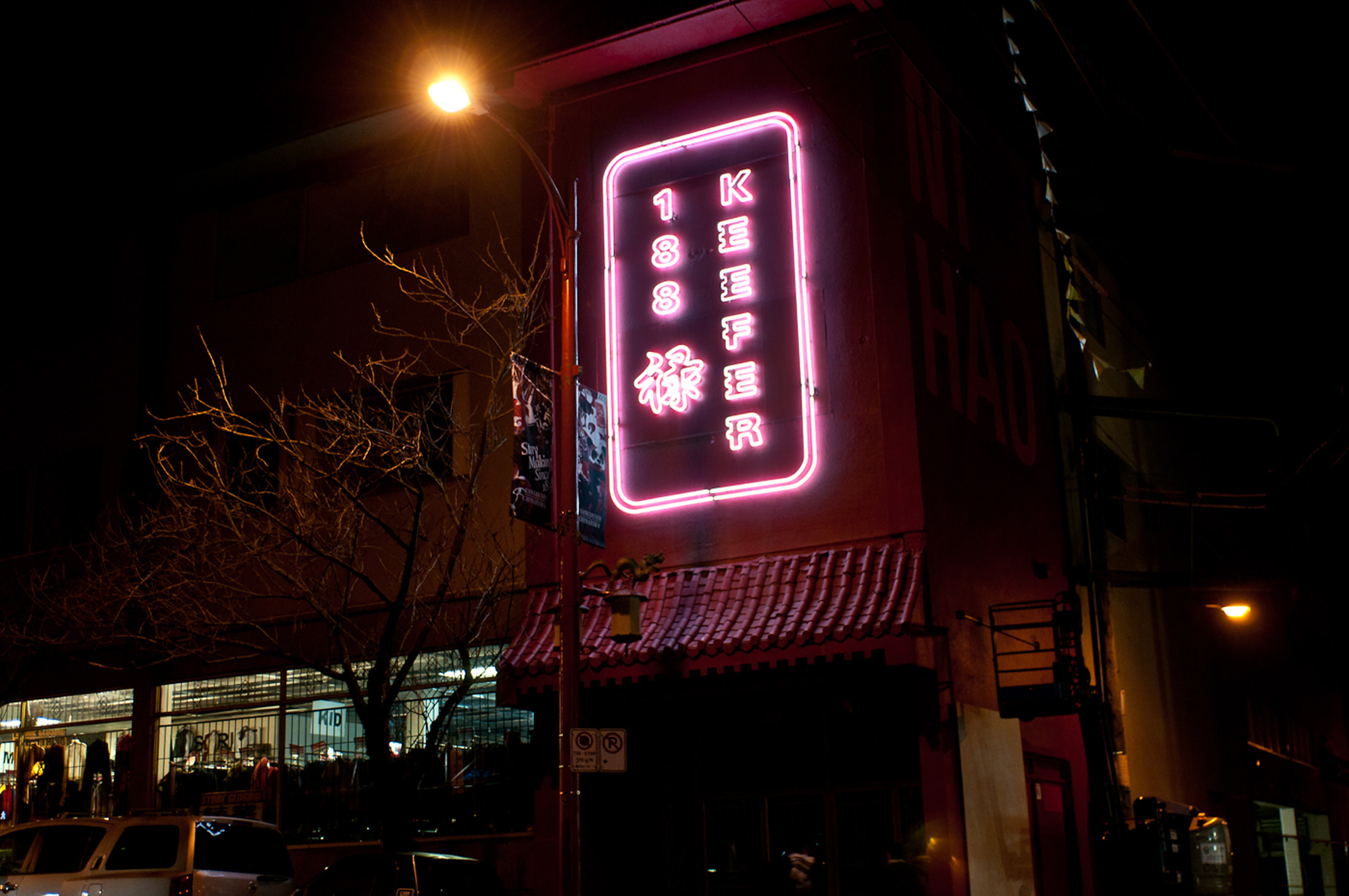
Endeavour Neon and TDH Experiential Fabricators are two neon signage companies based in Surrey, B.C.
Photo by Ocean Peak Studios.
-
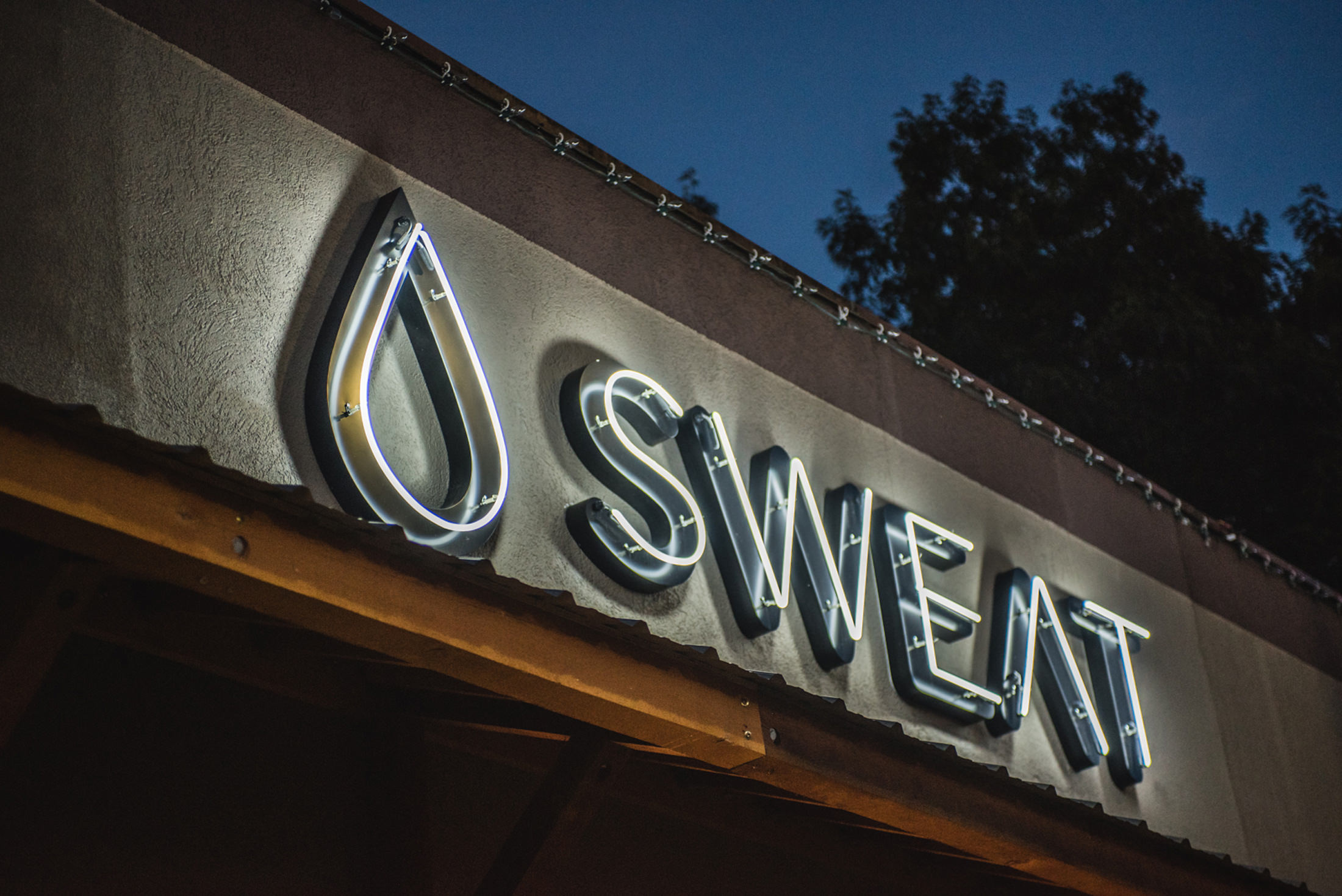
Sweat Vancity, North Vancouver.
Photo by Ocean Peak Studios.
-
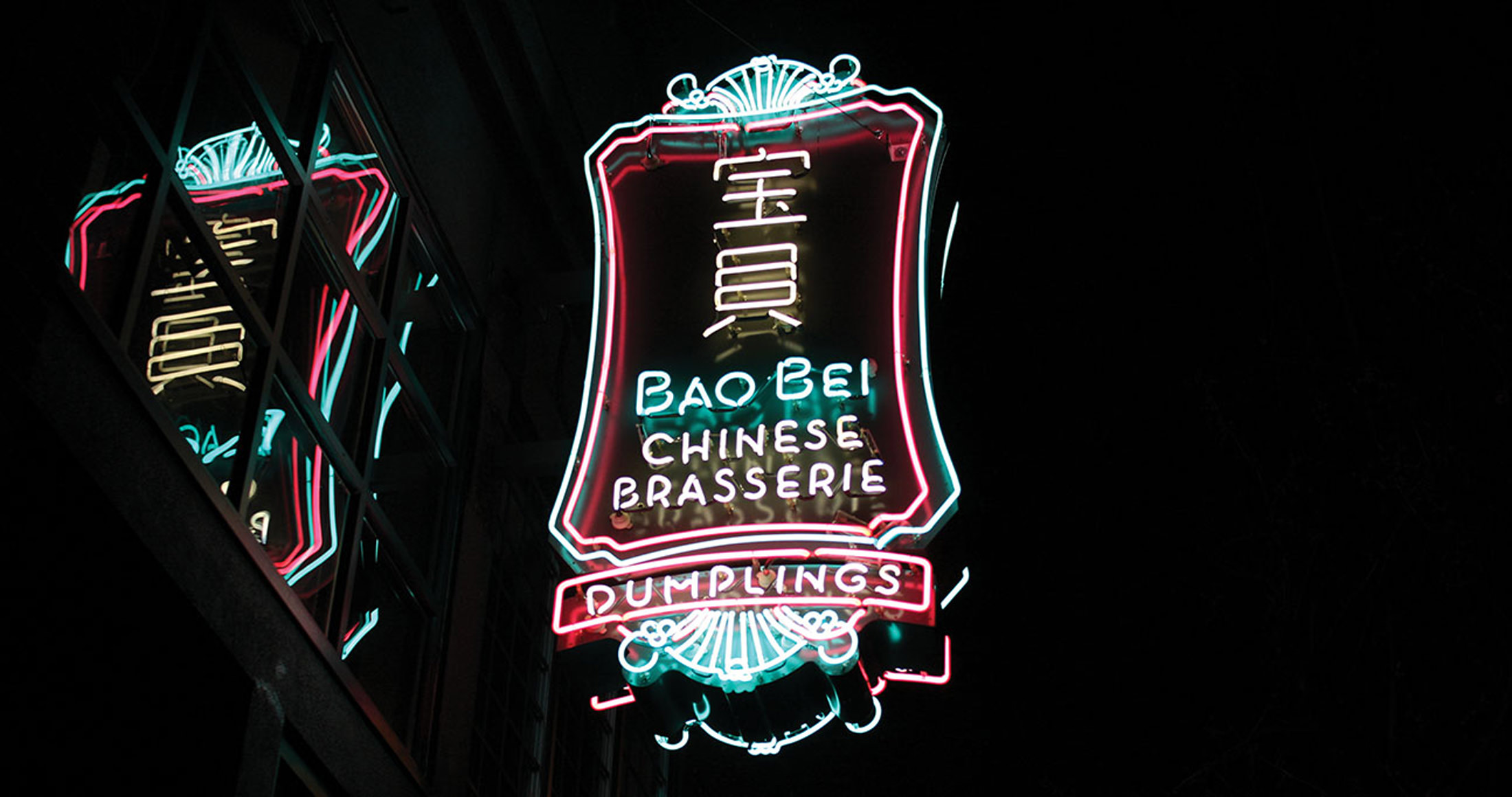
Bao Bei, Vancouver.
Photo by Ocean Peak Studios.
-
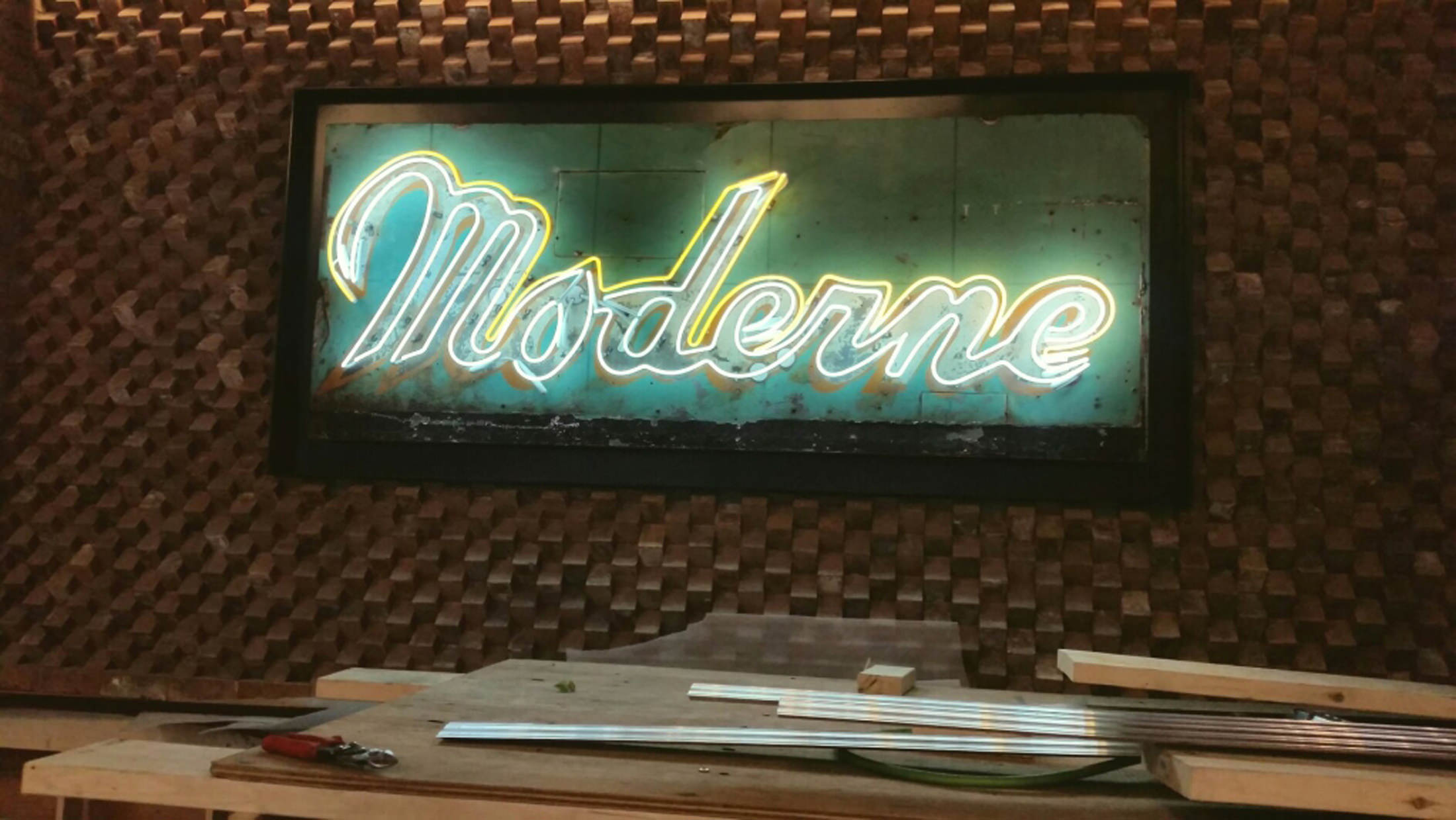
Joey Bentall One, Vancouver.
Photo by Ocean Peak Studios.
-
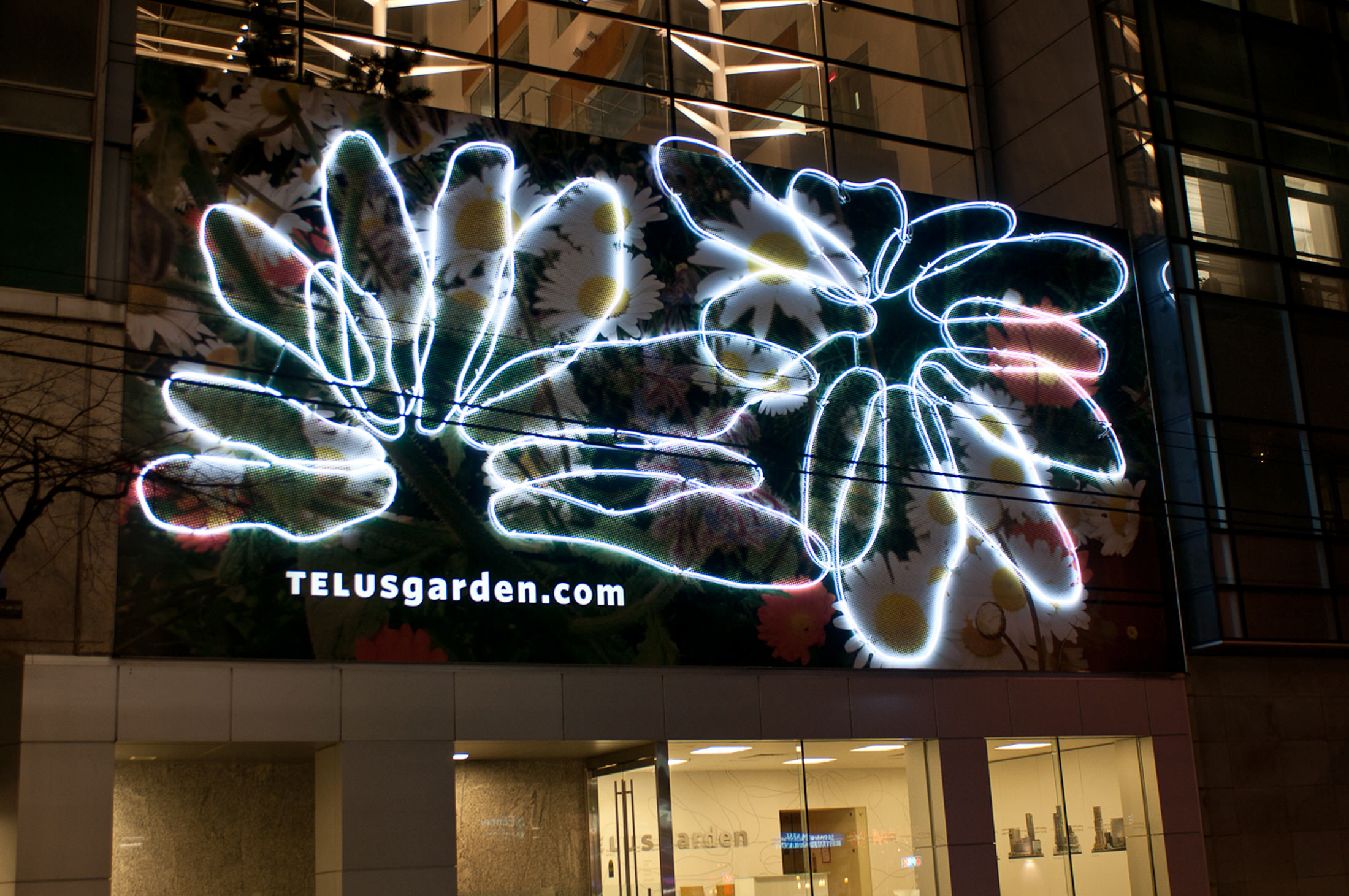
Telus Garden, Vancouver.
Photo by Ocean Peak Studios.
-
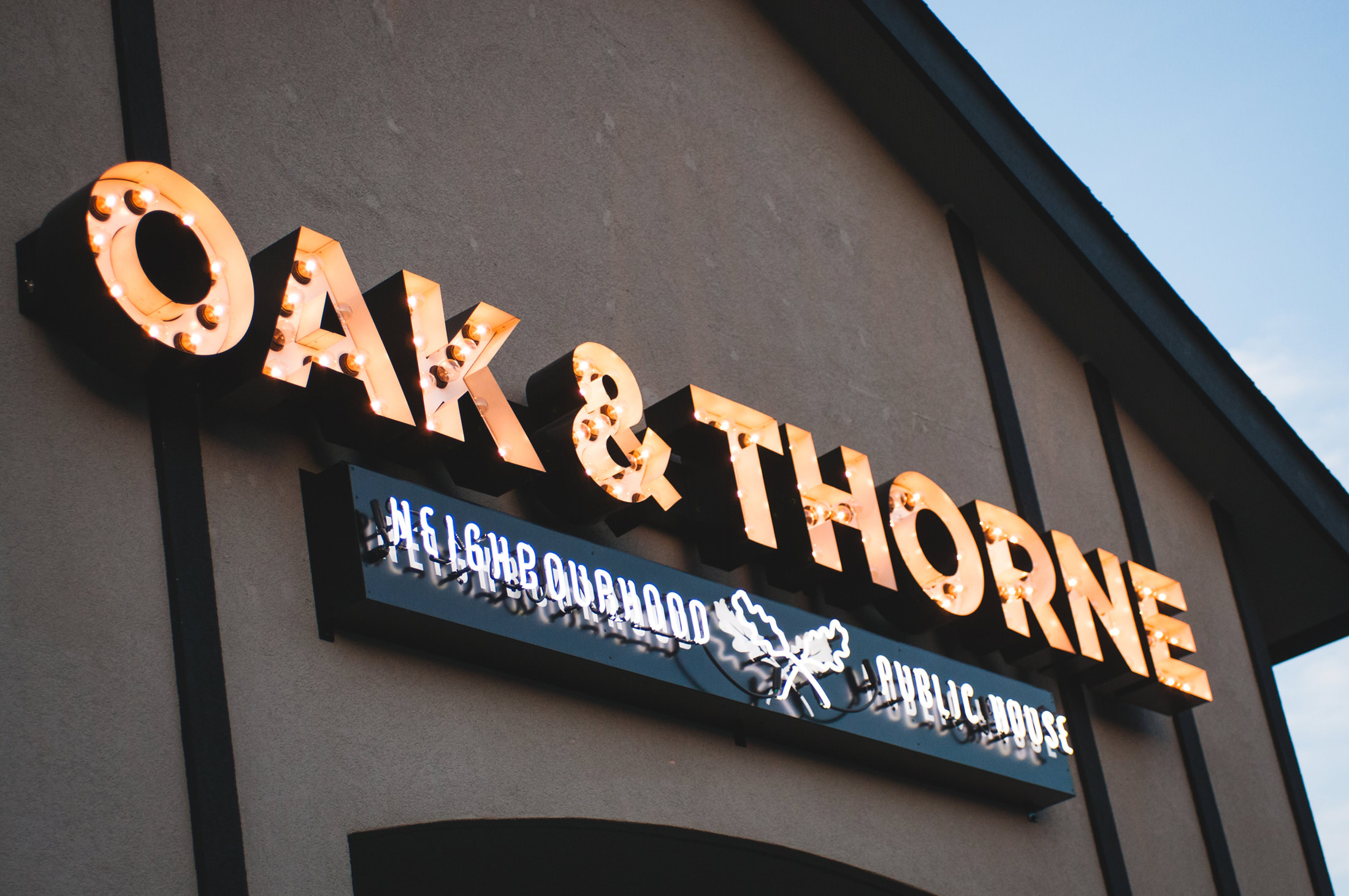
Oak & Thorne Neighbourhood Public House, Langley.
Photo by Ocean Peak Studios.
The Return of Vintage Neon Signs
Light bright.
A blonde in a green bathing suit leaps from a motel sign in Mesa, Arizona, splashing down into electric blue water. She’s been diving, over and over, for about 57 years—minus a blip in 2010 when a storm shattered the neon tubes that made her so mesmerizing and her community raised $120,000 (U.S.) to have her glory restored.
The fabrication process behind a neon sign like Mesa’s Diving Lady isn’t intuitive. At first glance, it’s easy to assume such signs are the work of machines—complicated ones sprouting reams of fluorescent glass noodles in some sort of massive, radiant factory somewhere. In fact, neon signs are hand-wrought, the product of patience, artistry, and skill. Each blinking beacon vying for your attention was carefully created by a neon bender who curved fragile, heated glass tubing until it was ready to shine.
If softening glass to optimal pliability over a 900ºC open flame without so much as gloves on sounds difficult and dangerous, it is. Andrew Hibbs, owner of Endeavour Neon, has been accidentally cutting and burning himself in the process for decades. Andrew and his older brother, Troy Hibbs, who runs a signage company called TDH Experiential Fabricators (the siblings often collaborate), began bending neon in their mid-teens. Their father, a bender by trade, had a workshop in the family’s backyard, where the boys would go before school to practise making signs.
At first glance, it’s easy to assume such signs are the work of machines. In fact, neon signs are hand-wrought, the product of patience, artistry, and skill.
“We’ve both grown up with neon in our blood,” says Troy, though ultimately Andrew had more patience for the frustrating delicateness of the job. “I remember watching Dad,” says Andrew. “I was fascinated with the bending, and working with your hands. He just let me do little stuff, and it takes years to figure it out—five years to get decent at it. So, I practised.” Adds Troy, “He’s literally hand-forming every piece, and that’s the same technology it was when it was invented. It hasn’t changed. Machines can’t do it, it’s too technical, so it’s really an art form.”
The brothers work together at their Surrey, B.C., workshop when restoring vintage signs—or creating new ones that look vintage. This was the case when Salli Pateman, who owns Sai Woo restaurant in Vancouver’s Chinatown (named for the chop suey house that occupied the location from 1925 to 1959), commissioned a re-creation of the original Sai Woo’s neon sign—a six-by-eight-foot green, red, and yellow rooster.
The Sai Woo rooster was a product of Vancouver’s neon-filled past. Introduced in 1910, neon lights began catching on in the twenties, proliferating in Las Vegas, Tokyo, and even sleepy little towns like Vancouver, where they suggested an exciting energy shift. At one point, Vancouver had 19,000 neon signs—but some found them garish and thought them dangerously distracting to motorists. By the seventies, anti-neon crusaders successfully lobbied for a neon-restricting bylaw that phased signs out, with many stripped from buildings and destroyed. But when Pateman learned of the old sign, she felt strongly that history should be restored. In 2016, she came to the Hibbs brothers with a task: to create a replica of the Sai Woo rooster exactly as it was just prior to its destruction—including the 34 years of wear and tear it had sustained by that time.
Neon signs have, over the years, been outshone by cheaper LED technology, but their warm lambency is irreplaceable.
“A lot of today’s signs are very clean-lined and simplified, whereas what you find from the ’30s to ’60s is very detailed,” says Troy of the complexities inherent in a project of this scope. “For Sai Woo, it’s a big bird shape. It’s got different hand-painted lettering and graphics. None of these are digital prints … so we use the same techniques they did back then. Then we age it. We study where would water pool and rust, and make fake rust on the sign, or if the neon had arced and made a burn on the sign, we could add burn marks, or if the paint was getting faded sitting in the sun for that long…”
The result is a sign—installed this summer—with character and a human touch. Neon signs have, over the years, been outshone by cheaper LED technology, but their warm lambency is irreplaceable. “People don’t always recognize that these signs are handmade, but subliminally they’re appreciating the craft behind it,” says Troy. The brothers are working on a larger-scale project in Edmonton—the Canadian city most engaged in restoring its neon heritage, having switched on eight restored signs on the wall of the Telus building there to create Canada’s first outdoor Neon Sign Museum in 2014. They have crafted a sign for Telus, the museum’s partner, and they hope to work on projects in other cities as communities increasingly value diving ladies, flapping roosters, and all manner of delightfully peculiar neon characters shining light on the past.
_________
Never miss a story. Sign up for NUVO’s weekly newsletter.

